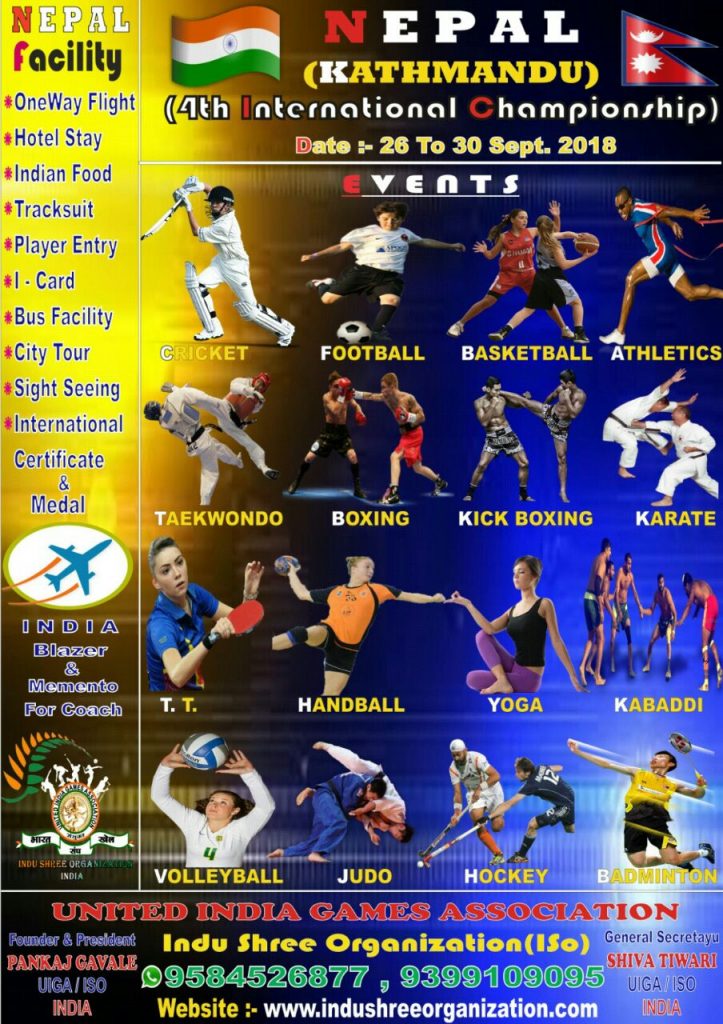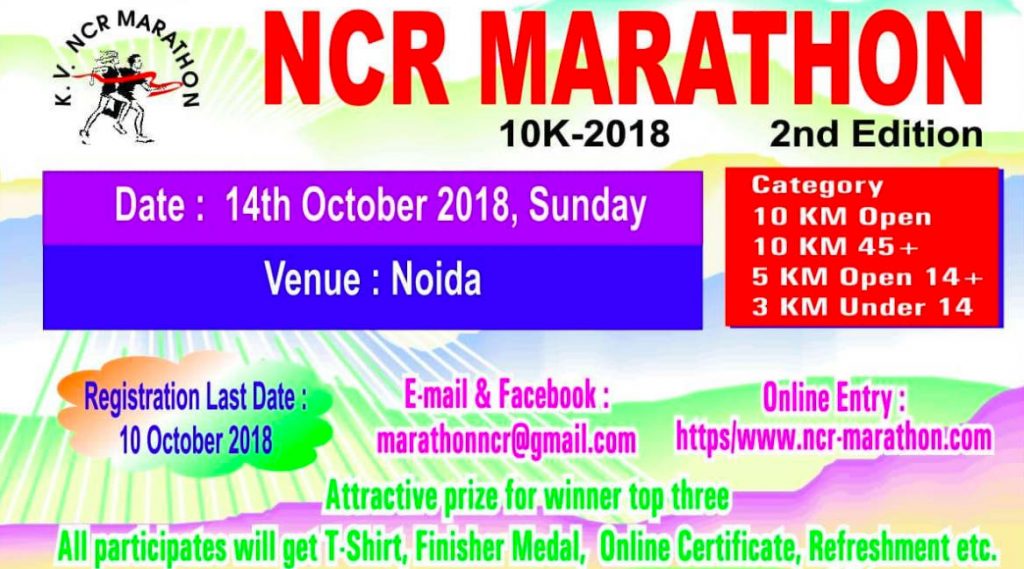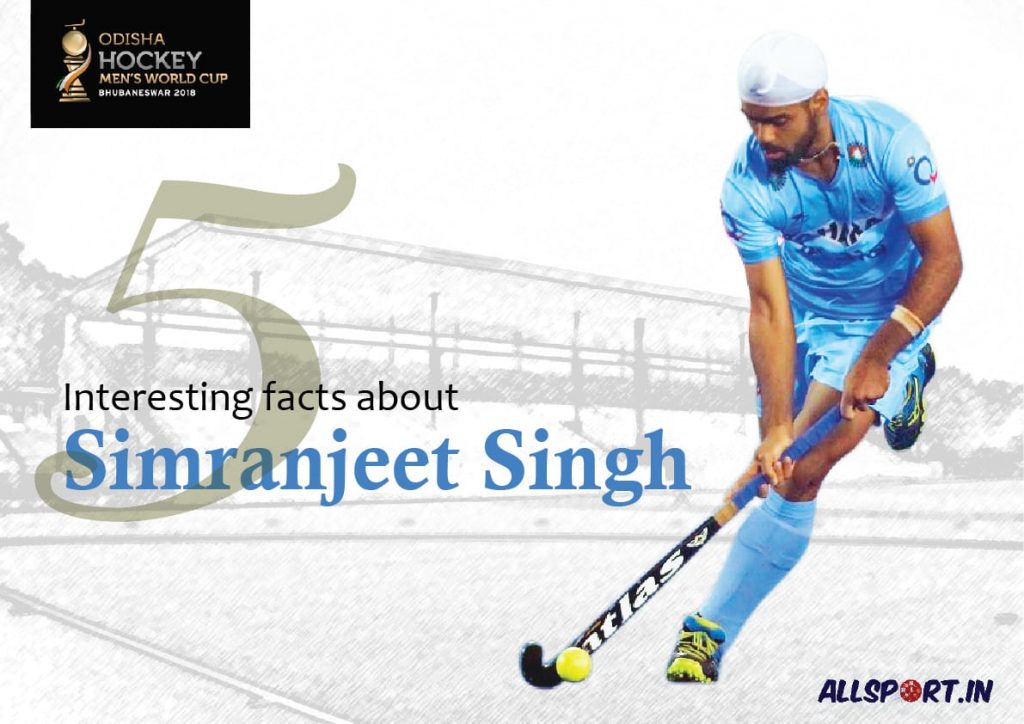India as a country has always glorified white collar jobs, which has caused a large share of its massive young population to chase after degrees in engineering, medicine, law and other mainstream professions that tend to be secured and financially rewarding. However, this sudden rush of human resources towards a few career options has created a massive oversupply of labor in these fields, which when compounded with an education system that is of questionable quality, has resulted in mass unemployment. This has resulted in certain sectors witnessing an oversupply of talent while other sectors experience a shortage of trained professionals. But job opportunities in the new ambitious and dynamic India are too diverse to be restricted just to a few streams. There are a host of new industries that are growing rapidly and are pushing the boundaries of how a job is defined.
India, the fastest growing large (GDP above 1 trillion USD) economy is home to a rapidly developing sports sector. The Indian sports industry recorded an annual revenue of USD 1.899 billion in 2015, up from USD 865 million in 2006, which represents a 119.5% increase in that 10- year period[1]. Sports sponsorship revenue in 2016 grew by 19.33% over its 2015 figure to reach USD 987.5 million as sports made up 11.5% of the total advertisement spending[2].
A steady rise in viewership from women (35%-38% in IPL, ISL & PKL) [3]& children along with strong growth in allied industries such as the events sector unlocks exciting new prospects for sports in India. This positive trend can be partially attributed to the rise of the franchise league system implemented in various sports with massive success. These initiatives have successfully tapped into the ever-increasing purchasing power and size of the Indian middle class. As rural India gets more and more integrated into the system the market size for sports in India is only going to increase.
Apart from the professional sports industry, allied industries such as fitness are also doing well in the country. In India, the total market for fitness was valued at around INR 4,670 Cr in 2016, growing at 17-19 percent and was estimated to cross INR 7,000 crore by the end of FY 2017. Retail is estimated to constitute around 28 percent of the total market and is expected to grow by 24-30 percent. Fitness centers are growing as per capita income rises and Indians become more conscious about health. Body Building, training has increased amongst men while aerobics and strength training have increased amongst women. This fitness sector includes sports clubs, Gymkhanas, gyms, swimming pools, coaching for various sports, diet planning services, etc. With more and more Indians availing such health and fitness oriented products and services the demand for gym instructors, coaches for various sports, fitness advisors, dietitians, managers of fitness facilities etc. have increased. [4]
In order to keep the show running there is a need for quality employees who can be broadly classified into; trained athletes on the field of play & skilled professionals off it in order to carry out the support functions. However, in most sports in India, there is dearth in talent available. This has resulted in a poor medals return from The Rio 2016 Olympics, where India had the lowest medals to GDP and medals to population ratios, below countries such as Jamaica, North Korea, Ethiopia, and Kenya.
Lack of talent development at the base level, lack of focused approach on sports with high internal potential, absence of sports culture especially in the education system, insufficient mentorship for young children, lack of infrastructure and support for athletes, etc. are some of the reasons, why India has won only 28 medals from the 24 Olympic games that it has participated in since 1900.
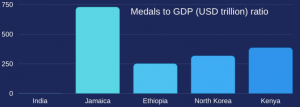
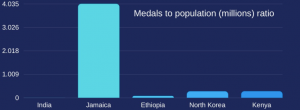
Data collected from: The business of sports – KPMG report
The government of India has started an initiative called Khelo India under which it has organized Khelo India School Games, an all India competition in 16 different sports for Under-17 athletes. Talented players identified in priority sports disciplines at various levels by the High-Powered Committee will also be provided annual financial assistance of INR 5 lakh per annum for 8 years under this program[5]. The government, however, is not alone in this endeavor, numerous sports startups have sprung up around the country and they are helping create jobs within the sector and are streamlining day to day activities in order to increase the efficiency. This has resulted in a growth in demand for sports-related professionals, and various institutes around the country are offering degrees and diplomas in the field to help match supply with demand. Indian sports is going through a phase of a capacity building because of which the industry’s requirements for professionals including managers, instructors, nutritionists, biomechanists, physiotherapist, psychologist, anthropologist, etc. will only increase from here onwards.
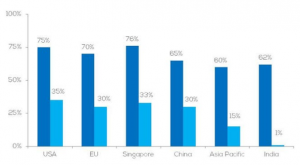
Dark blue: Number of people interested in sports
Light blue: Number of people participating in sports
The above graph shows how far behind India is lagging in terms of participation levels in sports. This is primarily due to the following reasons:
- Lack of access to sports facilities is the main reason which deters people from taking up sports and also poses a challenge for athletes at the grass root level
- Lack of security of income and employment in a career in sports for athletes outside the elite few and outside certain lucrative sports
- Lack of a strong sports culture in the country
There can be no doubt about the fact that Indian sports face many challenges in the upcoming years especially with the lukewarm response from corporate India in the development of sports as a part of CSR. However, a change in the attitudes of both Indian corporates and governments is evident with a year on year increase in expenditure in the field of sports. On the other hand, Indian sports at the elite level has proven to be very popular and also profitable making it a value proposition for investors who are flooding in. All this means that a career in sports in India today is more financially rewarding & secured than it ever was.
The combination of government & private entities recognizing sports as an area for improvement with the growth in allied industries such as events & fitness makes it the best time to be involved in sports in India, not only as an enthusiast but also as a professional.
[1] https://www.statista.com/statistics/214970/revenue-of-the-indian-sports-market/
[2] https://economictimes.indiatimes.com/news/sports/sports-sponsorship-industry-in-india-grew-at-19-33-per-cent-in-2016-report/articleshow/57673833.cms
[3] The business of sports – KPMG report
[4] https://economictimes.indiatimes.com/magazines/panache/the-pursuit-of-fitness-retail-market-for-fitness-in-india-expected-to-touch-rs-7000cr-by-2017-end/articleshow/60476309.cms
[5] kheloindia.gov.in



